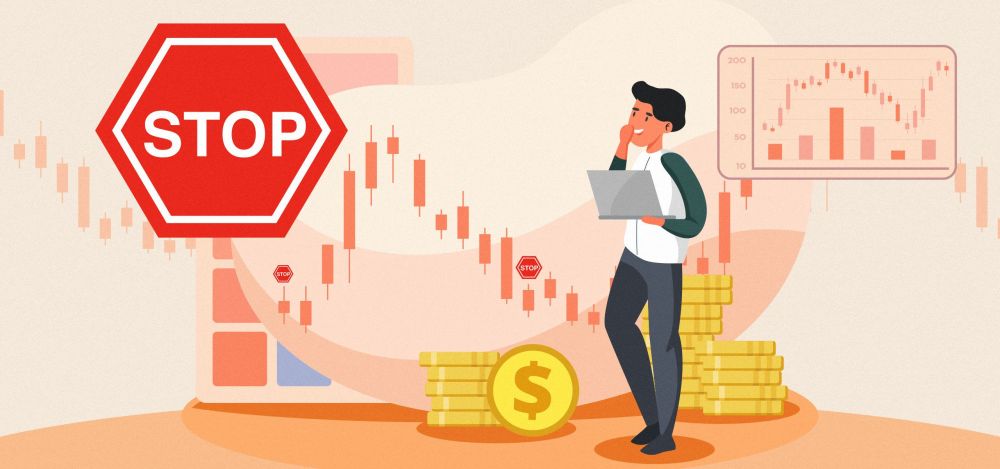Trading without stop-loss orders? By far, the most common question we receive every week has to do with stops.
- Where do you put your stops?
- Do you issue stop loss and take profit levels?
- Why don’t you use stops?
So to answer these questions, let’s start at the beginning.
What are trading stop-loss orders?
From Investopedia: A stop order is an order to buy or sell a security when its price moves past a particular point, ensuring a higher probability of achieving a predetermined entry or exit price, limiting the investor’s loss or locking in a profit. Once the price crosses the predefined entry/exit point, the stop order becomes a market order. Also referred to as a “stop,” a stop order to sell that is linked to a limit order is referred to as a “stop-loss order.”
There is so much wrong with this definition, we don’t even know where to begin. “Limiting the investor’s loss” and “locking in a profit.” Those are good right?
Yes, they are. But those two reasons are rarely why stops are really used. More often than not, stops are used out of fear. Fear of a loss. Fear of getting blown out. Fear of having moved too early and the idea a stop will help lower ones entry before a move. Fear is no way to trade. Fear leads to repetitive losses. Fear leads to dumb decisions.
The vast majority of those who are trading with stop-loss orders are doing so out of fear. This fear exists for a number of reason.
- Inexperience
- Emotion
- Over leverage
- Lack of diversification
#1 and #2 are rather straight forward. We discussed a few weeks ago the average day trader has a life span of only 3 weeks and how only 1% of traders will ever make money above the cost of trading. We also talked about how a lack of accountability with your results leads to poor decision making going forward.
Both inexperience and emotion lead to the perception that stops are there to save you. They are not. Stops are often the reason traders last only 3 weeks. Additionally, they are often the reason traders lie to themselves about their performance… passing off a stopped trade as “just a small loss… it doesn’t count.”
Those small losses add up.
#3 (over leverage) is perhaps the most common reason stops are used. No matter the size of your account, when overleveraged, every move in the market seems like the greatest move ever, or the end of the world. The temptation to prevent the “end of the world” scenario leads to a need for “protection.” But due to a lack of experience, emotion and now over leverage, a stop is used which virtually insures a loss… over… and over… and over again.
#4 (lack of diversification) contributes as well. When a trader is focused on one single market, every move in that market makes or breaks the traders day. This means some “protection” may be perceived as necessary. It’s not. What is necessary is some diversification. Diversification allows traders to be patient and allow their strategy to work. Some trades will fail to produce a profit while others generate all the results.
Why are we trading without stop-loss orders?
There are two ways to answer this question. The first has to do with all of the reasons listed above. Our material is systematic and unemotional. We trade 34 markets across a wide range of asset classes (from the S&P down to cocoa) and leverage is applied liberally according to investor specific requirements. The more important reason why we don’t use stops has to do with the math and physics behind our programs.
Mathematical patterns don’t include a zero. They alternate from +1 to -1 and back again like a pendulum on a clock. As such, we alternate from long to short to long to short in the same way. A stop would be a zero which in mathematical patterns is an impossible (imaginary) number. More on this later in a future blog.
Summary:
We have seen stops described as “capital preservation tools”, “friends”, “insurance” and “safety nets”. Rather, we would describe them as “useless”, “misguided protection”, “symptom solving” and simply as a way to ignore the underlying problem leading to why a stop feels necessary in the first place. Reduce your risk. Diversify. Have a plan and stick to your plan. Follow those methods and stops will no longer feel necessary.
-

The rhytm beneath the noise
-

You Don’t Need a Trading Style. You Need an Edge.
-

Consistency Isn’t the Goal—It’s the Outcome
-

What 2 Quadrillion Data Points Told Us
-

Math and Physics-Based Trading in Any Market Condition
-

Do not worry about anomalies
-

Consistency should not be the goal. Consistency should be the result.
-

Stop canceling fridays
-

The Elliott Wave Forecast is Subjective, Bias Driven And Backwards looking
-

Finding patterns in market data

